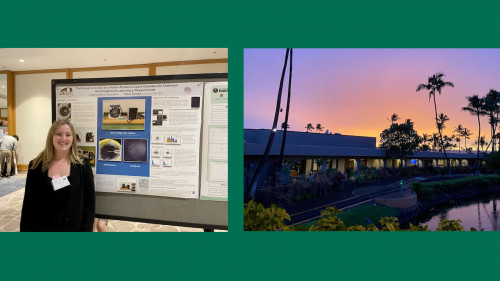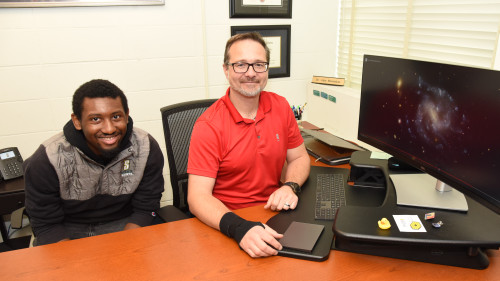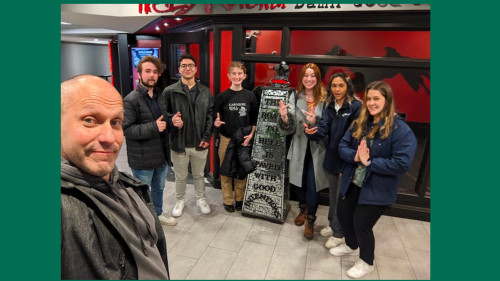
To help physics students develop spatial reasoning skills, Michele McColgan, Ph.D., has been awarded a $299,715 grant from the National Science Foundation.
McColgan, professor of physics and lead investigator for the three-year grant, will use the funds to develop a series of augmented reality instructional modules that allow students to visualize many of the 3D concepts covered in the first year of introductory physics.
She said spatial reasoning skills have not been well studied in the physics education field.
“There is an expectation that students entering college in STEM fields have strong spatial reasoning skills and are experienced problem solvers. Research, however, shows that students with low spatial skills are less likely to continue in STEM and that men outperform women in these skills. This project aims to show that long-term spatial training in the introductory physics courses will improve spatial reasoning skills, physics content knowledge, and problem-solving skills.”
The apps were developed by an interdisciplinary team of Siena physics, chemistry, and computer science students and faculty. They began their project four years ago with funding from CURCA.
“We are developing MARVLS - manipulable augmented reality visualizations to learn spatially,” McColgan explained. “The goal is to provide connections between 2D representations of physics concepts typically seen in textbooks and paper assignments, and actual 3D models.”
The team has developed two apps with more than 100 augmented reality conceptual models that are overlaid onto a physical cube. The cube, viewed through a smartphone or tablet, can then be manipulated to rotate or change perspective. Want to check it out? The apps are available on the Apple Store and the Google Play Store.
The NSF grant will support the development of learning modules and the evaluation of the effectiveness of the apps themselves and the MARVLS learning modules. George Hassel, Ph.D., assistant professor of physics, and Megan Kelly, Ph.D., assistant professor of psychology are co-investigators on the grant.
“I congratulate Dr. McColgan and her team on receiving this prestigious grant to develop augmented reality instructional modules,” said John Cummings, Ph.D., dean of Siena’s School of Science. “That our faculty are so closely involved with students in this effort is an excellent illustration of Siena's commitment to involving its undergraduate students in meaningful academic research and project development."
The apps were developed using Unity, a game development software application together with Vuforia, an augmented reality software development kit.
Evaluation and revision of these instructional modules will show that they can be used to further modeling instruction. This project is also an opportunity for student researchers, a mix of freshmen through seniors from different STEM disciplines, to work together on a real-world STEM project.
“I love how this project is focused on helping students gain a better understanding of abstract science concepts,” said Natalie Stagnitti ’23. “It is so exciting to be working on this grant as I have learned not only about augmented reality and 3D development, but also about time management and collaborating with a team to accomplish set goals.”
Classmate Alex Ressue ’23 said developing augmented reality models for students to manipulate freely, using their own personal devices, has been a great experience.
“Not only have I learned the development process of these models, I have also learned how to better cooperate with a group of people who share the same goal, and how to use the knowledge I gained from my time here at Siena to help others understand these concepts in physics,” he said.

